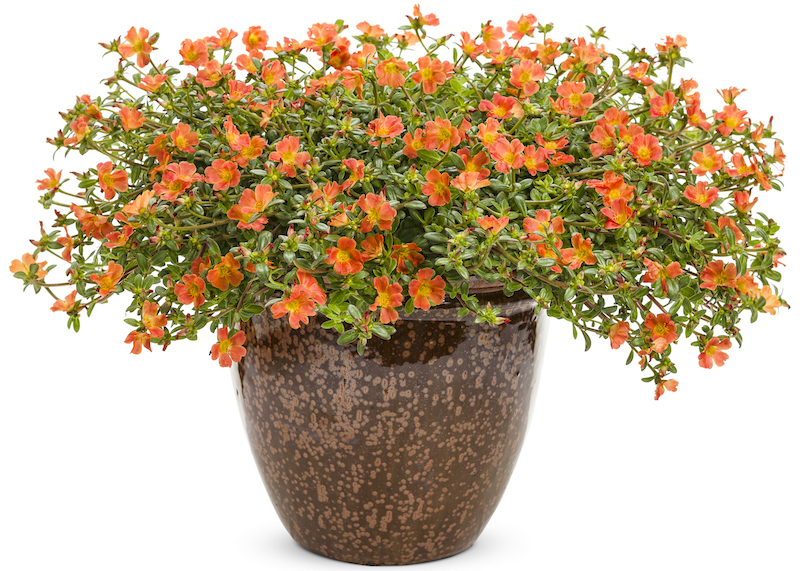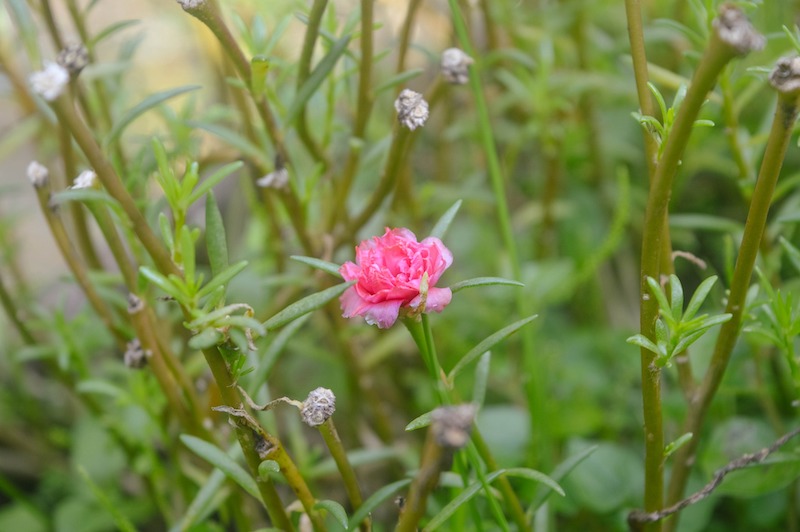Purslane is a trailing succulent that is commonly grown as an annual. Pruning is not a big part of caring for this plant, but maintenance pruning will keep the plant looking great and growing all summer long. Purslane is a slow-growing plant that prefers bright sunlight. Plants in lower light levels may become leggy. Trimming straggly growth will encourage more dense growth and create a carpet of greenery and blooms. A well-timed trim can extend the bloom cycle, giving you more time to enjoy the brightly colored flowers.

Purslane does not always need to be pruned, but learning how to properly trim the plant will encourage new growth, prevent the plant from looking straggly, and may even prolong the bloom cycle.
When to Prune Purslane
Keep an eye on your plants and prune Purslane when the growth becomes straggly or overgrown. This plant can become leggy if it does not receive enough sunlight. Plants typically need to be trimmed around mid-summer. Depending on the amount of light the plant receives, it may need a trim earlier or later in the growing season.
Deadhead Purslane, or remove spent flowers when they start to fade. Flowers can be removed as soon as they begin to droop or die. Deadheading Purslane is an ongoing process. Observe the plant to remove the dying flowers, or just pinch some off as you walk by. Keep the plant looking good and enjoy the blooms as long as possible by waiting until they start to decline before deadheading the plant.
Why Prune Purslane
Pruning Purslane keeps the plant looking its best and staying healthy. Overgrowth can be unsightly, but trimming back straggly stems will force the plant to push out new growth. New growth will be more dense, leafy, and beautiful. Removing dead flowers or deadheading Purslane redirects energy into new growth, so the plant will become fuller and possibly push out more flowers.

How to Prune Purslane
Step 1 - Remove dead or damaged growth
Trim stem sections that are dead or brown and remove yellow foliage to keep the plant tidy
Step 2 - Observe the plant
Look for lopsided or straggly growth that is unhealthy or distracting
Step 3 - Trim the plant
Cut stems back by one-third to encourage branching and new growth
Step 4 - Remove spent flowers
Trim flowers or pinch off at the base of the bloom
Purslane Pruning Tips
- Trim dead growth
- Remove overgrowth
- Cut Purslane back by no more than one-third
- Deadhead Purslane as flowers fade
 |
Author Alison Cotsonas - Published 04-20-2023 |
